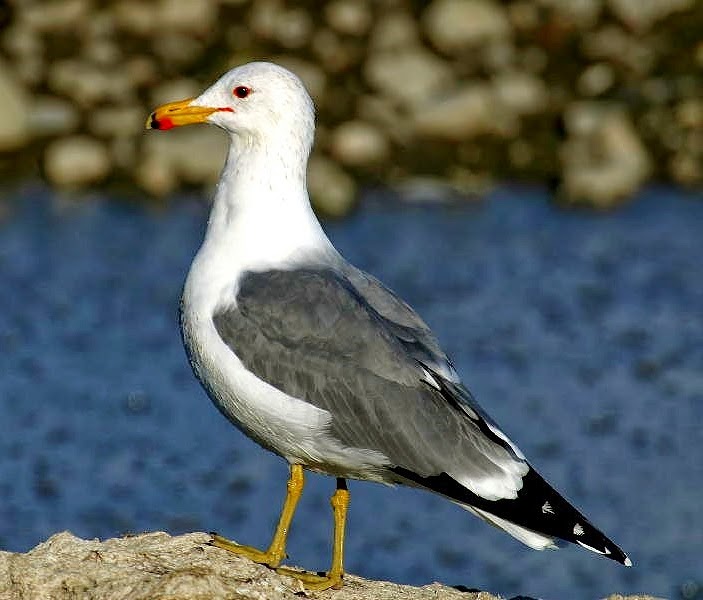 |
| (Photo from Les Animaux du Monde) |
Common name:
California gull (en); gaivota-da-Califórnia (pt); goéland de Californie (fr); gaviota californiana (es); Kaliforniermöwe (de)
Taxonomy:
Order Charadriiformes
Family Laridae
Range:
This species breeds inland, from central Canada, in Alberta, Saskatchewan and the southern parts of the Northwest Territories, and through North Dakota, Wyoming and Idaho into Washington, Oregon, California and western Nevada, in the United States. With the exception of some resident populations in Washington, the California gull winters along the Pacific coast of North America from southern British Columbia, Canada, to Colima, Mexico.
Size:
These birds are 45-54 cm long and have a wingspan of 122-140 cm. They weigh 430-1.050 g.
Habitat:
The California gull breeds on rocky islands in freshwater and hypersaline inland lakes and rivers, as well as in marshes. Outside the breeding season they also use coastal waters, sandy beaches, estuaries, mudflats, pastures, agricultural fields and garbage dumps. they are present from sea level up to an altitude of 2.800 m.
Diet:
They have a very varied diet, including fish, insects, earthworms, small mammals such as gophers and mice, birds, aquatic invertebrates, grain, fruits and garbage.
Breeding:
California gulls breed in April-July. They nest in colonies and the pairs are monogamous. The nest is a scrape in sand or dirt, sometimes lined with vegetation, feathers and bones, where the female lays 2-5 buff to greenish eggs with dark spots, speckles and blotches. The eggs are incubated by both parents for 23-27 days. The chicks may leave the nest after a few days but remain in the immediate area. they are fed by both parents and fledge 47-54 days after hatching. They reach sexual maturity at 4 years of age.
Conservation:
IUCN status – LC (Least Concern)
This species has a large breeding range and the global population is estimated at 0,5-1 million individuals. The population is believed to be increasing.







